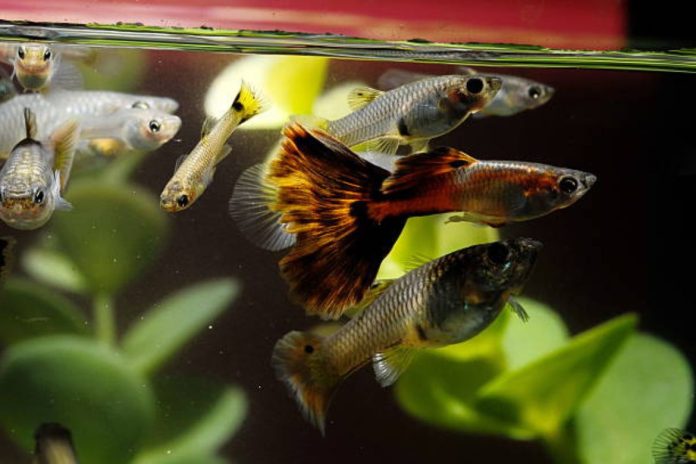Betta fish, known for their vibrant colors and elegant fins, can be fascinating to breed. However, breeding bettas and managing a betta’s pregnancy can come with several challenges. Understanding these challenges and knowing how to address them is crucial for ensuring the health and well-being of both the female betta and her fry. Here are some common challenges and their solutions.
1. Identifying a Pregnant Betta
Challenge: Distinguishing between a gravid (egg-carrying) female and a bloated or sick betta can be tricky. A female betta full of eggs might be mistaken for one that is overfed or suffering from a health issue.
Solution: To identify a gravid betta, look for specific signs such as a swollen abdomen, the presence of vertical breeding bars on her body, and a noticeable white spot near the vent, known as the ovipositor. Observing these signs can help you differentiate between a healthy, gravid betta and one that might need medical attention.
2. Male Aggression During Breeding
Challenge: Male bettas can become aggressive during the breeding process, potentially harming the female. This aggression can lead to injuries or extreme stress for the female betta.
Solution: To mitigate male aggression, ensure the breeding tank is large enough and has plenty of hiding spots for the female. Introduce the female to the male’s tank gradually, using a transparent divider or a breeding box. Monitor their interactions closely and separate them if the male becomes overly aggressive.
3. Maintaining Optimal Water Conditions
Challenge: Pregnant bettas and their fry require specific water conditions to thrive. Poor water quality can lead to health problems and reduce the chances of successful breeding and fry survival.
Solution: Keep the water temperature between 78-80°F and maintain a pH level around 6.5-7.5. Perform regular water changes and use a gentle filter to ensure clean water. Test the water parameters frequently to keep ammonia, nitrite, and nitrate levels at safe concentrations.
4. Ensuring Proper Nutrition
Challenge: A gravid female betta requires a nutritious diet to support her health and the development of the eggs. Inadequate nutrition can lead to poor egg quality and affect the overall health of the betta.
Solution: Provide a varied diet rich in protein, including high-quality betta pellets, frozen or live foods like brine shrimp, bloodworms, and daphnia. Feeding small amounts multiple times a day can help ensure she gets the necessary nutrients without overfeeding.
5. Caring for the Fry
Challenge: Betta fry are delicate and require specific care to survive the early stages of life. Inadequate care can lead to high mortality rates among the fry.
Solution: Once the eggs are laid and fertilized, remove the female from the breeding tank to prevent her from eating the eggs. The male should stay to tend to the bubble nest and care for the eggs until they hatch. After hatching, remove the male to prevent him from eating the fry. Feed the fry with infusoria or commercially available fry food for the first few days, gradually introducing baby brine shrimp or microworms as they grow.
6. Managing Overcrowding
Challenge: Betta fry grow quickly and can soon overcrowd the tank if not managed properly. Overcrowding can lead to poor water quality and increased stress, negatively impacting their health and growth.
Solution: As the fry grow, transfer them to larger tanks to provide enough space. Ensure each tank has appropriate filtration and water conditions to support their development. Regularly monitor their growth and health, and be prepared to separate any fry that show signs of aggression.
Conclusion
Breeding bettas and managing a betta’s pregnancy can be a rewarding but challenging endeavor. By understanding and addressing these common challenges, you can ensure the health and well-being of both the female betta and her fry. Proper identification, managing aggression, maintaining optimal water conditions, providing adequate nutrition, caring for the fry, and preventing overcrowding are key to a successful betta breeding experience. With careful planning and attention to detail, you can enjoy the fascinating process of betta fish reproduction and contribute to the thriving life cycle of these beautiful fish.








